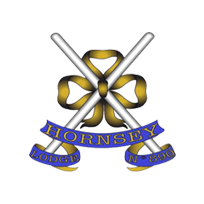The Great Hall
The Great Hall is the central jewel in the crown of this magnificent heritage site. It is inside the Grade I listed North Wing which was built to house the financial and management functions of the hospital. The costs of running the hospital were not borne from taxes, insurance or private investment, but by voluntary donations from benefactors. The Governors used the hall to hold its meetings and to welcome and entertain the great and the good of the City to attract them to become donors, whose names and the sums of their donation were inscribed on its walls. Patient care was provided in the other wings of the hospital, as it still is today.
The Great Hall is situated on the first floor of
The North Wing. It is approached by way of a grand staircase known as the
Hogarth Stairs, the walls of which were decorated by William Hogarth
(1697-1764). As the top of the staircase is reached, the Great Hall is accessed
by a dominating doorway that opens up into the large Hall decorated with
portraits and dedications to the early contributors to the redevelopment of the
hospital. Most striking is the portrait of Henry VIII at the west end of the
room, hands on hips and glaring down at all who enter. A combination of the
majesty of the stairway and the ever-watching gaze of this most belligerent of
monarchs makes this a suitably intimidating arena in which to examine final
year medical students!
The Henry VIII portrait is a copy of an original
that was hung in the Palace of Whitehall until it was destroyed by fire in
1698. The original was a group that depicted Henry with Jane Seymour, along
with his parents, Henry VII and Elizabeth of York, the Queen Consort. The
original hanging of the portrait in The Great Hall was supervised by James
Gibbs and William Hogarth in 1738.
A central fireplace is decorated by a portrait of
St Bartholomew. Opposite this is the Charter Window, not installed until 1743,
depicting Henry VIII presenting his charter to Thomas Vicary, arguably the
saviour of Barts in the 16th Century, on the foundation of the new hospital.
Opposite Henry VIII and forever meeting his eye is a hung portrait of Edward
VII. The Charter Window pre-dates the current building, having been installed
from the previous Great Hall, dating to the 16th or 17th century.
Other important works include portraits of Percival
Pott painted by Sir Joshua Reynolds and of James Paget by Sir John Millais,
which along with portraits of John Abernethy and William Harvey hang in the
rooms surrounding the Great Hall.
The ceiling was decorated in gold leaf by Jean
Baptiste St Michell and represents his only work in England. The walls are
lined with the names of the benefactors that supported the hospital from its
re-foundation onwards and those that made the redevelopment of the hospital
possible after the near-bankruptcy that it faced after The Fire of London. The
names run from 1546 until 1905, at which point space ran out.
Following the inception of the NHS in 1948, the funding of Barts, like other hospitals became the responsibility of the government and so the functions of the Great Hall gradually changed to more general uses such as an examination hall for students, award ceremonies, receptions, dinners, cultural events and lodge meetings.
The Hogarth Staircase
The Great Hall is approached by way of a grand staircase, the Hogarth Stair, the walls of which were decorated by William Hogarth (1697-1764). Although often referred to as murals, they are in fact canvases. Hogarth was well-known at the time for his paintings and engravings. His artworks were studies of everyday life, perhaps more accessible in this regard, and commonly resembling caricatures.
Hogarth was born in Bartholomew Close, which now contains many of the
medical school buildings. He was incensed to discover that an artist from the
continent (Jacopo Amigoni) had been approached to provide artwork for The North
Wing’s staircase and offered to do so free of charge. His paintings depict The
Pool of Bethesda and The Good Samaritan.
These devotional paintings were strongly reminiscent of Italian art of
the same period but the individuals depicted are strikingly original and the
portrayal of Christ is often considered to be one of great dignity. This might
be explained by the fact that although we know that the figures were painted by
Hogarth, George Lambert, who made his name from painting scenery at Covent
Garden is thought to have painted the landscape in the later painting, and
possibly in both.
These invaluable works of art need protection and ongoing care. Twelve years after their completion, it is noted in the Governors’ minutes that they were already in need of cleaning. This entry in the minutes determines that Hogarth was to be consulted as to how this would best be done. The artist had them cleaned at his own expense two years later in 1751. Hogarth had specifically requested that the completed canvases never be varnished. Unfortunately, we know that nobody listened, as when they were cleaned in the 1930s, seven coats of varnish were removed. As an indication of how much dirt the paintings accumulated, when they were again cleaned in the 1960s it was only then that the inscription in the foundation stone in the second tableau was discovered.
The paintings are still used as an educational tool as the characters portrayed are thought to be patients from the hospital, many of whose conditions are recognisable to the trained eye. None of the illnesses are exaggerated, perhaps unusually for an artist known for caricatures, and reflect a handful of illnesses that would have been seen regularly at the hospital during Hogarth’s time.


